Contents
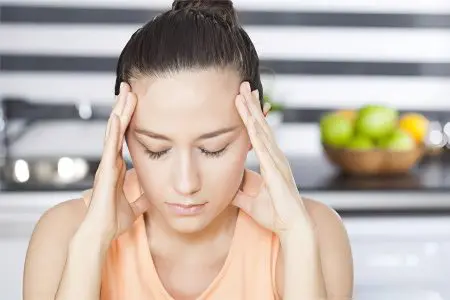
Anemia is a common name that unites a whole group of hematological disorders associated with a decrease in the blood level of hemoglobin and red blood cells. Anemia, if left untreated, threatens with serious health consequences, and in some cases can even lead to death.
The most common type of anemia is iron deficiency anemia, which affects people of any gender, but most often it is diagnosed in women. However, this is not surprising. After all, it is women who experience regular menstrual bleeding, which under certain circumstances can be very massive.
Women bear, give birth and feed children. During these periods of life, the body’s need for iron also increases.
Women more often than men restrict themselves in nutrition, go on diets, which leads to insufficient intake of iron in the body. Therefore, it is about female anemia that will be discussed further.
Anemia in women – what is it?
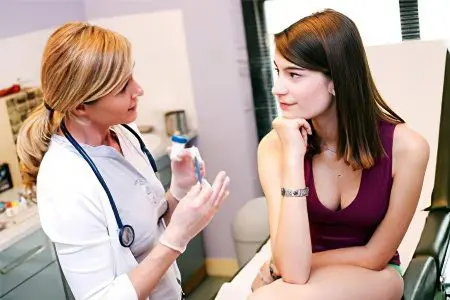
Anemia in women is a pathological condition of the body, which is characterized by a drop in the level of hemoglobin and red blood cells in the blood.
Erythrocytes in a woman are formed in the red bone marrow from protein compounds and other components. This process is called erythropoiesis. Red blood cells carry hemoglobin, which is responsible for gas exchange in the body. It delivers oxygen to organs and tissues, and takes carbon dioxide from them. Therefore, if the level of hemoglobin and red blood cells decreases, a person develops anemia.
The average lifespan of red blood cells is 21 days, after which the red blood cells are sent to the spleen, where they are destroyed. Non-protein fractions are utilized, and the protein components are again sent to the red bone marrow to become the basis for the formation of new red blood cells.
Anemia in a woman can be of the following types:
Iron deficiency anemia, which develops more often than others and is characterized by a decrease in the amount of iron in the body. Anemia in a woman is said to be when the hemoglobin level drops below 120 g / l.
B12 deficiency anemia, which develops against the background of a lack of vitamin B12 in the body, and sometimes folic acid.
Folate deficiency anemia, which develops when there is a deficiency in the body of folic acid.
Aplastic anemia is a disease that is accompanied by a decrease in the level of all blood elements against the background of bone marrow hypoplasia. This is a serious condition, mainly inherited.
Hemolytic anemia is characterized by early destruction of red blood cells, which leads to a decrease in their number.
Posthemorrhagic anemia, which develops against the background of acute or chronic blood loss.
Causes of anemia in women
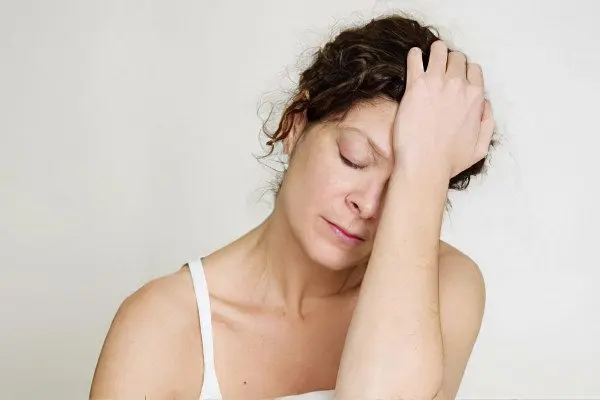
More often than others, women develop iron deficiency anemia, so it will be discussed later.
The reasons for its occurrence may be as follows:
Prolonged and heavy menstrual bleeding, which can be a feature of the body, or occur against the background of various diseases. It should be understood that if menstruation lasts longer than 10 days, then this is not normal and requires treatment.
Disorders in the work of the organs of the digestive system. This leads to the fact that useful substances from food are not able to be absorbed into the blood. Anemia can be caused by gastritis, gastric and duodenal ulcers, resections of the stomach and intestines, intestinal infections, colitis, etc.
Compliance with a strict diet with a sharp restriction in the menu of animal products.
In girls, anemia can develop during the period of rapid growth of the body, with an unbalanced diet, with the early introduction of whole milk into the child’s diet.
Anemia often develops in women during pregnancy. The probability of its occurrence is higher, the more children the future mother bears at the same time. Anemia is a frequent companion of toxicosis, when beneficial substances are excreted from the body during vomiting and diarrhea.
The period of breastfeeding can also provoke the development of anemia. At this time, the woman’s body consumes iron and other useful substances in double volume.
Diseases of the female reproductive system, such as uterine cancer, cervical cancer, uterine fibroids – all this can lead to the development of anemia.
It should be noted that many of the listed reasons, for example, nutritional errors and pregnancy, can lead to the development of not only iron deficiency anemia in a woman, but also other types of anemia (B12 deficiency and folic deficiency anemia).
The first signs of anemia in women after 30
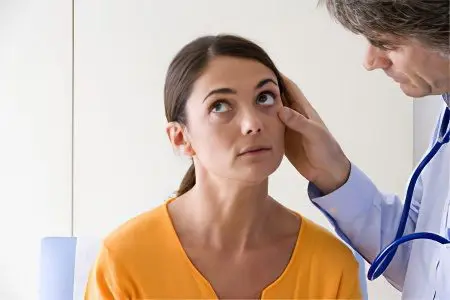
Female anemia has certain features of the course. It begins to develop when the hemoglobin level drops to the level of 90-120 g / l. Such anemia is considered mild and may not manifest itself in any way. However, if a woman is attentive to her health, then she will still notice the minimum signs of a developing disorder.
The first symptoms of anemia in women after 30 include:
Decreased performance. All those affairs and duties that a woman previously performed, now I will be given to her with difficulty.
During the day, drowsiness increasingly begins to disturb, despite the fact that the woman has not changed the daily regimen and she has enough time for a night’s sleep.
Flies and flashes periodically appear before the eyes.
When in a cool room, a woman will be very cold. Such an unexpected reaction to a low temperature should lead to the idea of developing anemia.
The skin of the face becomes dry, wrinkles and cracks appear on it.
The mucous membranes suffer from ulceration.
Be sure to pay attention to the nails, which become brittle and dull, they may appear longitudinal stripes.
Anemia affects the condition of the hair. At the age of 30, a woman may find that her hair has begun to become very gray and fall out.
On the part of the psyche, the changes caused by anemia are more difficult to notice, but still, most women note that they have become much more irritable and tearful. There is a weakening of memory and concentration.
These symptoms may not develop in full and not always. However, anemia cannot manifest itself completely asymptomatically. The main thing is to listen to your body and not ignore its signals.
What are the main symptoms of anemia in women?
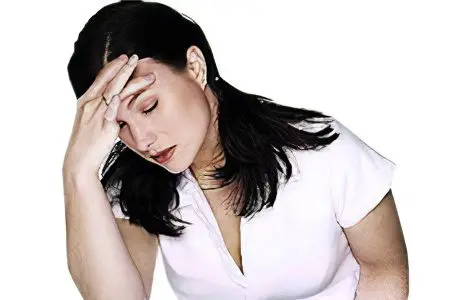
The main symptoms of anemia in women develop when the disease reaches moderate severity. In this case, hemoglobin drops to 70-90 g / l.
The main manifestations of anemia of moderate severity include:
Circular-hypoxic syndrome. As anemia progresses, the skin and mucous membranes become very pale and undergo trophic changes. A woman is increasingly beginning to worry about dizziness, which can turn into fainting. The heartbeat quickens, if there are already any diseases of the cardiovascular system (IHD, heart failure), then anemia will aggravate their course. During the load, and then at rest, the woman will begin to be haunted by shortness of breath.
Sideropenic syndrome. The skin is covered with cracks, ulcers form in the mouth, which heal for a long time and painfully. The tongue is often inflamed. Women begin to complain of abdominal pain, and when examining the organs of the digestive system, they are often diagnosed with atrophic gastritis. Periodically, there may be a desire to smell some specific odors (acetone, paint, gasoline), or eat some unusual food (chalk, tooth powder, clay). Sideropenia is indicated by weakness of the muscular apparatus, uncontrolled urination, dyspepsia.
Asthenovegetative syndrome. Irritability intensifies, the woman becomes whiny and quick-tempered. Memory and attention continue to deteriorate.
Immune system disorders. As anemia progresses, the body’s natural defenses weaken. Therefore, a woman often begins to get sick with ARVI and intestinal infections.
What threatens anemia in women?

If anemia is not detected and treated in time, then it leads to the development of irreversible processes in the woman’s body. A decrease in hemoglobin levels leads to a decrease in immunity. With the failure of the immune system, the likelihood of contracting not only mild respiratory infections, but also serious diseases, such as tuberculosis, increases.
In addition, the cardiovascular system, with a deficiency of hemoglobin and red blood cells, works in an enhanced mode. The heart pumps large volumes of blood to stop the oxygen starvation of organs and tissues. This leads to rapid wear of the heart muscle and threatens with the onset of heart failure.
A woman becomes irritable, her psycho-emotional background will be unstable, which is associated with the risk of developing neurological pathologies.
Possible complications of anemia include:
Decreased immunity.
Myocardial dystrophy and heart failure.
Pathologies of the digestive system and respiratory system.
Mucosal damage.
Deterioration of mental abilities.
The most formidable complication of anemia is hypoxic coma, which is fatal.
Anemia during pregnancy is no less dangerous, as this violation increases the likelihood of miscarriage and early birth. Not only the mother suffers, but also the fetus, which begins to lag behind in mental and physical development.
Treatment of anemia in women

About how anemia is treated, a woman should find out in the doctor’s office. It is impossible to self-diagnose and start therapy. Even the presence of all signs of anemia requires laboratory tests.
Therapy of anemia begins with the establishment of the cause that provoked it. However, adherence to a special diet is an indispensable condition for getting rid of iron deficiency in the body. A woman is recommended to include in the menu products – sources of heme iron. This is red meat, liver, tongue. Be sure to add foods rich in vitamin C to the menu. Otherwise, iron will not be absorbed in full. Refuse to drink coffee, tea, milk, chocolate. These foods contain oxalates and polyphenols, which interfere with iron absorption.
It is worth considering that only with the help of one diet it will not be possible to get rid of anemia. You will need to take iron supplements. The course of treatment should last at least 1,5 months. During this time, the hemoglobin level should return to normal. Then, for another 1,5-2 months, a woman should take iron-containing preparations in order to replenish the depot of this substance in the body.
Useful articles on the restoration of hemoglobin in the blood:
List of iron preparations for the treatment of anemia
Diet and proper nutrition for anemia
TOP foods to increase hemoglobin in the blood
Which doctor should I contact for anemia?
If anemia is severe, then the patient is transfused with erythrocyte mass.
During pregnancy, all women, without exception, should receive iron supplements to prevent anemia. Start taking this substance in the second trimester and finish after breastfeeding is completed. The dosage should be selected by the doctor.
Anemia is a serious problem that can make life difficult for any woman. Therefore, to prevent the development of anemia, one should not abandon the annual medical examination and donate blood for analysis. If even slight deviations in the blood picture occur, treatment should be started.









